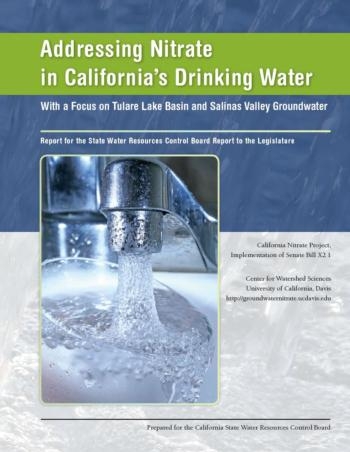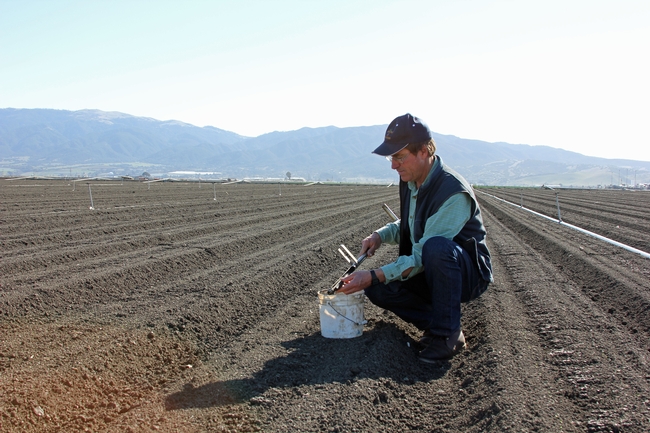Drinking water is a commodity often taken for granted in the United States. When we turn on the tap, we assume the water streaming out is at least safe, if not always up to our individual taste. We expect that problems with our drinking water are isolated, temporary and newsworthy. Which may be one reason why a report released yesterday by UC Davis made headlines.

You can read “Addressing Nitrate in California’s Drinking Water” online in its entirety, or one of the shorter summary documents. This report was commissioned by the California State Water Resources Control Board in 2010 and is the first comprehensive scientific investigation of nitrate contamination in the Tulare Lake Basin and the Salinas Valley.
"The report defines the extent and costs of the problem, for the first time, and outlines how we can address it," said the report’s co-author Thomas Harter, UC Cooperative Extension specialist in the Department of Land, Air and Water Resources at UC Davis, in a UC Davis press release. "We hope it provides the foundation for informed policy discussions."
For the report, scientists examined data from wastewater treatment plants, septic systems, parks, lawns, golf courses and farms. The authors found that more than 90 percent of human-generated nitrate contamination in these regions’ groundwater is from agricultural activity—including applications of synthetic fertilizer and animal manures.
In their California Water Blog post on the topic (and a related op-ed), the report authors highlighted three key challenges for going forward, including this one:
“Nitrate discharges to groundwater and the degradation of underground water supplies are a chronic problem. Do the economic benefits of groundwater degradation outweigh the negative effects of degraded groundwater? Will it be cheaper, and better for all, to pay for the treatment of small water systems and preserve agricultural jobs? Would such an approach threaten long-term groundwater salinization from some of the same sources? Who will bear these costs of source reduction?”
While yesterday’s report looked directly at drinking water contamination, another—the California Nitrogen Assessment, currently under way—will evaluate existing information to gain a comprehensive view of nitrogen flows in the state, with a particular focus on the roles agriculture can play. The Agricultural Sustainability Institute's Tom Tomich gave an update to CDFA earlier this month about the progress of the California Nitrogen Assessment, which has brought stakeholders (including farmers) together to evaluate potential future scenarios in relation to nitrogen management and California agriculture.
These two reports apply science to define problems, evaluate costs and benefits, suggest solutions, compare options and otherwise serve to help guide decision makers throughout the state.

Here are some highlights of current UC ANR projects that aim to help reduce fertilizer contamination of groundwater:
- Nitrogen management in vegetable crops: With trials in lettuce fields, UCCE advisors in Monterey County have demonstrated effective ways to reduce nitrogen inputs, save money and provide water quality benefits while maintaining equivalent yields, using a combination of weekly nitrate testing and scheduled irrigation management.
- Nutrient analysis via leaf sampling for nut trees: Though leaf sampling currently provides tree-crop growers with a threshold "critical value" of nutrient analysis, this team of researchers is working to establish more robust and useful leaf sampling protocols that could point to specific timing of applications, fertilizer rates or other "nutrient budget" details for nut trees, particularly almond and pistachio.
- Tools for dairies to manage nitrogen and water discharge: UCCE specialists at UC Davis and UC Riverside have developed comprehensive resources to help dairy operators comply with regional water discharge requirements, including step-by-step instructions for sampling supply wells and subsurface drainage systems, solid manure, liquid manure and soil.
Find out more about how UC is working to ensure all Californians have access to healthy crops and safe water including details of projects like these, peer-reviewed publications and experts, by visiting http://ucanr.edu/hcsw.